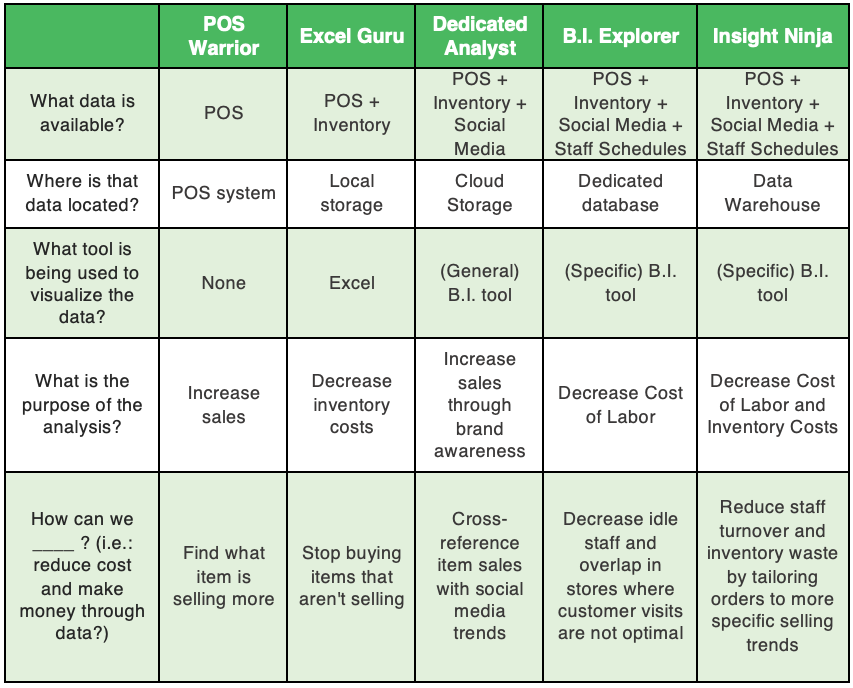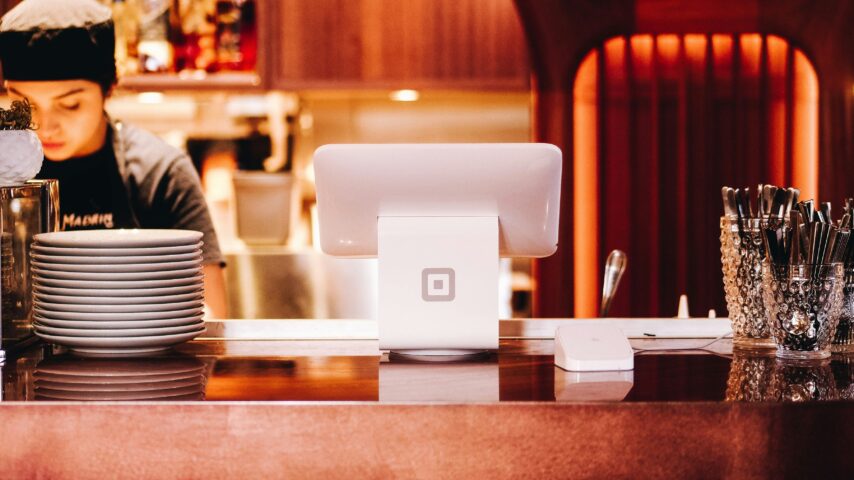“ The goal is to turn data into information, and information into insight.” – Carly Fiorina, former executive, president, and chair of HP Co.
– – – – – – – – – – – – – – – – – – – –
The word “data” has been a buzzword for a while now, but what does it mean and how can you use it to make more money? In this article, we’re going to look at 3 things associated with restaurant business intelligence:
- Levels of data sophistication in restaurants
- Potential value at stake
- Guide to assess which level you are currently at
Typically, we see people start their restaurant journey using very little data, but the sky is the limit. Let’s dive in…

1) Levels of data sophistication in restaurants
No matter whether you are a small family diner, a medium sized restaurant group or a large corporation with hundreds of stores – you are already generating a huge amount of data. It is a waste of potential revenue not to use this data. McKinsey conducted research and found that a retailer which uses its data for analysis could increase its operating margin by more than 60%.
The journey from data to insight can be a confusing one, and even if at first glance you don’t know what you’re building, you will improve in sophistication over time.
We think of people across five different levels of sophistication:

“POS Warrior” – you use your POS as the source of truth, and rarely look at numbers beyond simple sales
“Excel Guru” – As operations grow, data starts coming in from other sources and with that, the need for new tools. Top of the list – Microsoft Excel. You spend your days pasting data between sheets to create weekly reports
“Dedicated Analyst” – Now you’re ready to have some resources dedicated to looking at your numbers – perhaps reporting to finance or operations, they’re working with templated reports and starting to be a core part of the conversation.
“B.I. explorer” – as data volume increases, you’re now starting to ensure there is a central repository for your data, and you’re using some third party tools to visualize this for management and head office
“Insight Ninja” – now you’ve mastered not only reporting and data collection, but you’re getting your front line managers to take decisions based on data and you’re creating more value for your organization.
We define these stages using the following table:

2) Potential value at stake
No matter where you are currently positioned, you can start to derive value from the data you have available.
First, you need to decide on your priorities. Organisations often prioritise making better decisions, improving operational efficiencies, growing revenues and increasing competitive advantage when implementing business intelligence. After deciding yours, it is possible to see the following kind of value creation opportunity:

3) Guide to assess where you fall?
Questions to ask:
- What data sources do you have in your business?
- Where is this data stored today and how is it ingested?
- How frequently is this data updated?
- Can you ask any question you want of the data?
- How are you viewing data today?
- Are your managers taking actions based on this data?
- Are you seeing a positive return on the money you’re spending on data and analytics?
Now the question is, how can you move to the next level of sophistication? Businesses can almost immediately see a return on investment when adopting a true data strategy.





